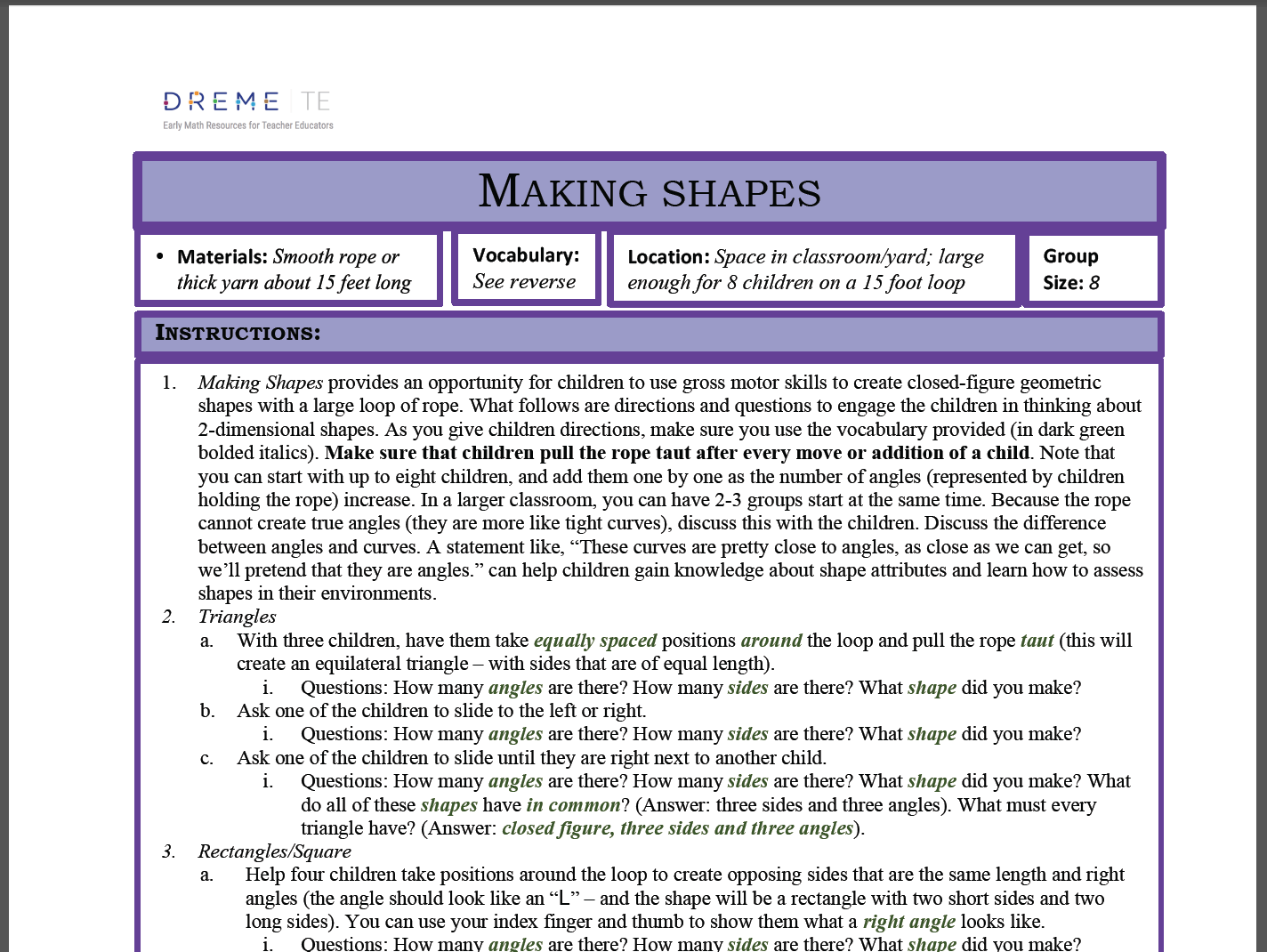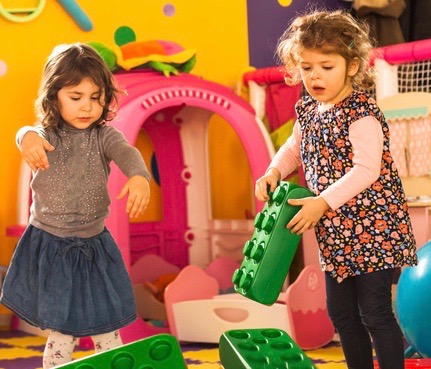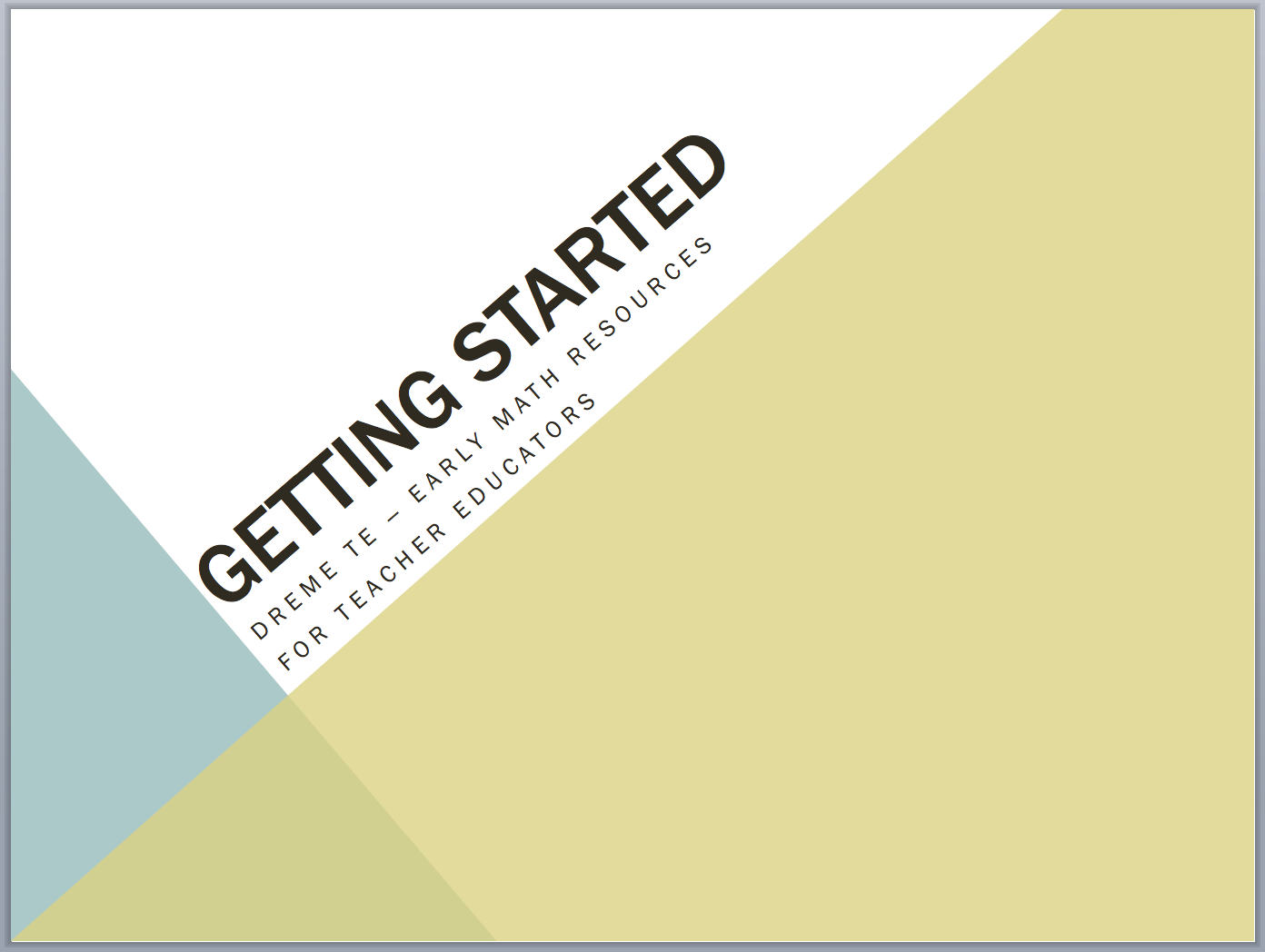This fictionalized but very real story of actual teacher experiences tells the story of a team-teaching effort to incorporate meaningful and important concepts in geometry and spatial relations into a project-based preschool curriculum.
Geometry: A Fresh Look

Flora, Kizzy, and Michele were writing lesson plans during naptime for the following month. Their curriculum was project-based and writing these plans was an outlet for their own creativity and provided a broader opportunity for engaging children than scripted curricula. Over the summer, they had met to plan the upcoming school year and had reviewed some articles on the latest research on young children’s development. Now, as they were planning November’s lesson plan goals and activities for the math domain, they decided to concentrate on geometry. They had decided that the theme was going to be Marine Environments because it provided lots of connections with shapes.
Flora started, “I think we need to go beyond traditional shapes this time. We usually include circles, squares, triangles, diamonds and hearts… oh and the stop sign one.” Kizzy interjected, “Octagon.” “Oh yeah, eight sides make an octagon. I think we should add a pentagon and hexagon and, what are seven-sided shapes called?” Flora asked. Michele answered, “I don’t know, we’ll need to look that up. How about if I work on that and the science stuff, and you and Kizzy can split up the rest?”
As Michele started thinking about how she could incorporate more shapes than those they traditionally included in the curriculum, she remembered a few of the articles they had read over the summer. As she leafed through them, she pulled out all the readings on geometric shapes and figures. As she did so, she was reminded that some of the researchers had written not only on shapes, but on spatial relations too. So, she pulled those out as well to take home.
That weekend, she read over the articles. She also thought about the goals that she and Flora and Kizzy had for the children. Their overall goals were to support learning in language, literacy, cognitive skills such as executive functioning and critical thinking, socio-emotional skills, math, fine and gross motor skills, science and the arts—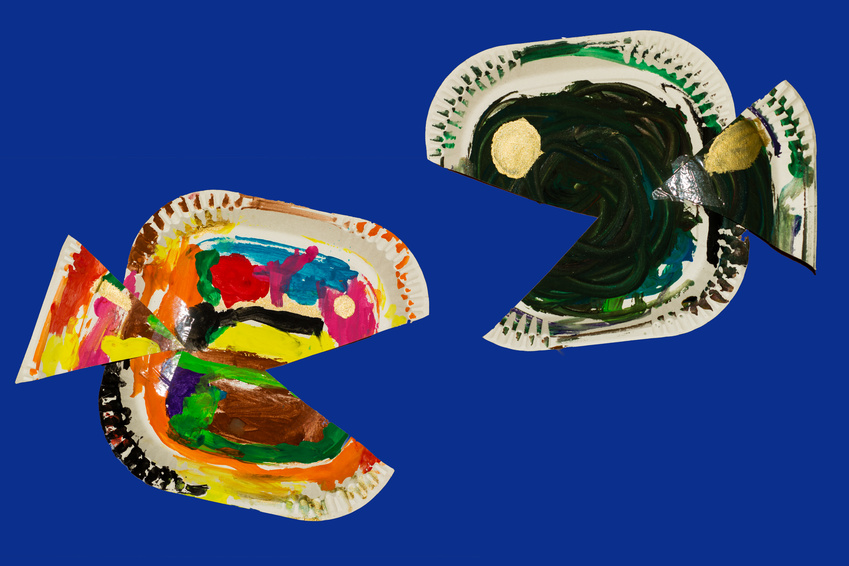 all through the lens of Marine Environments and with a long-term goal of continuing to build the foundation for all later learning and academic achievement. Objectives to achieve those goals included teacher-child and child-child conversations with rich vocabulary; support for emergent literacy through phonological awareness activities; book reading; engagement in challenging mathematics and science activities; fine and gross motor activities that infiltrated all of these; art projects that explored the theme in an open-ended way; and finally, developing socio-emotional skills by promoting pro-social behaviors and emotional understanding and regulation. “Whew” Michele thought, “A tall order.”
all through the lens of Marine Environments and with a long-term goal of continuing to build the foundation for all later learning and academic achievement. Objectives to achieve those goals included teacher-child and child-child conversations with rich vocabulary; support for emergent literacy through phonological awareness activities; book reading; engagement in challenging mathematics and science activities; fine and gross motor activities that infiltrated all of these; art projects that explored the theme in an open-ended way; and finally, developing socio-emotional skills by promoting pro-social behaviors and emotional understanding and regulation. “Whew” Michele thought, “A tall order.”
She decided to zero in on her assignment for the weekend. How can geometry help us in our goals and objectives in this theme? As she delved deep into the articles, she realized that expanding the number of shapes wasn’t going to help them achieve very many objectives. As a matter of fact, naming shapes was pretty much only going to provide the children with a few more vocabulary words. Unless they did something different, it seemed like the naming, cutting and pasting of shapes would provide far fewer learning opportunities compared to other, more complex activities they had planned in the other learning domains. Many of the articles she had brought home on geometry pointed to the correlations between children’s abilities in geometry and spatial relations and later academic achievement. These included children’s abilities in physical and mental transformation—the kind supported by puzzles and tangram activities. She also noticed that a number of studies showed that the richer the spatial language environment, the better children did later in mathematics-related assessments. Gaining the language to describe objects and spatial relations appeared to support children’s cognitive development such as categorization and problem-solving.
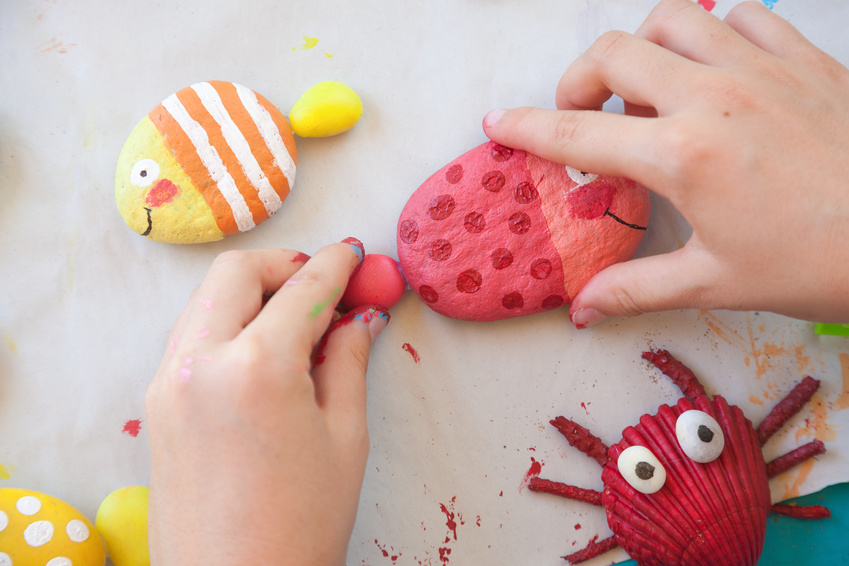 As she read more, she jotted down Marine Environment activities that came to mind. As she put down the last article, she looked at her list. “Wow” she whispered softly. As she pictured these activities, she realized just how rich environments and interactions could be if she, Kizzy and Flora broadened their scope. She thought of fish scales and how their shape reflects their functions; which marine animals live at different levels of the ocean and why; jigsaw puzzles of ponds, rivers and ocean scenes; how schools of fish turn; why whales live in certain places in the ocean and then how and why they move to other places; and how turtles are tracked in the ocean and on the shore. She grew excited as she imagined making a classroom maze to imitate a coral reef.
As she read more, she jotted down Marine Environment activities that came to mind. As she put down the last article, she looked at her list. “Wow” she whispered softly. As she pictured these activities, she realized just how rich environments and interactions could be if she, Kizzy and Flora broadened their scope. She thought of fish scales and how their shape reflects their functions; which marine animals live at different levels of the ocean and why; jigsaw puzzles of ponds, rivers and ocean scenes; how schools of fish turn; why whales live in certain places in the ocean and then how and why they move to other places; and how turtles are tracked in the ocean and on the shore. She grew excited as she imagined making a classroom maze to imitate a coral reef.
During naptime on Monday, Michele explained to Kizzy and Flora how her ideas on geometry and spatial relations could greatly enrich the Marine Environments theme. As she spoke, they became excited, too. As they planned the curriculum, it became apparent that all of Michele’s activities in this domain couldn’t possibly fit within one month. And, once they caught on, Kizzy and Flora were adding more of their own ideas, and then the activities definitely didn’t fit within a month. They agreed to continue Marine Environments until they ran out of engaging activities, or the children tired of the theme, whichever came first. And next time, they’d know how to incorporate this important and rich domain into future themes.

